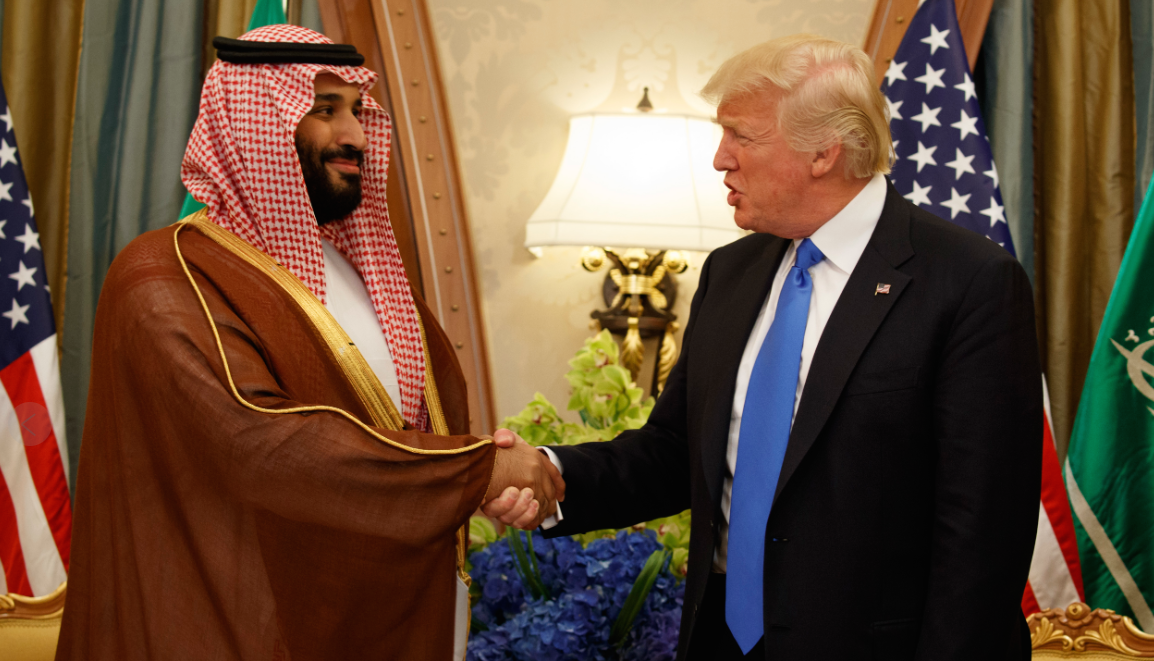Saudi Arabia’s crown prince announced on Thursday that the country plans to invest $600 billion in the United States over the next four years. This statement followed a remark by President Donald Trump, who had previously outlined the financial implications of making Saudi Arabia his first foreign trip after taking office.
Trump’s 2017 visit to Saudi Arabia broke the long-standing tradition of U.S. presidents visiting the United Kingdom first. The trip highlighted the close relationship between the Trump administration and the Gulf states, especially as Trump’s real estate company had been pursuing business ventures in the region.
In a phone conversation with Trump, Crown Prince Mohammed bin Salman confirmed Saudi Arabia’s goal to increase its investments and trade with the U.S. over the coming years, aiming for $600 billion and possibly more. The information was shared by the Saudi Press Agency.
The report did not provide specifics on where exactly Saudi Arabia plans to direct its investments and trade with the U.S. In recent years, the U.S. has become less dependent on Saudi oil exports, which had long been the foundation of their partnership. Meanwhile, Saudi sovereign wealth funds have made significant investments in U.S. businesses and are also exploring opportunities in the sports industry.
Saudi Arabia continues to rely heavily on U.S.-made weapons and defense systems, and these could potentially be part of the investment plans.
The White House released a statement on Thursday confirming the phone call between the two leaders, noting that they discussed efforts to promote stability in the Middle East, enhance regional security, and combat terrorism. The statement also mentioned that they talked about Saudi Arabia’s global economic goals for the next four years, as well as trade and other opportunities to strengthen the economic ties between the U.S. and Saudi Arabia, though no further details were provided.
The crown prince, who is effectively the ruler of Saudi Arabia, also had a conversation with U.S. Secretary of State Marco Rubio earlier on Thursday.
After his inauguration on Monday, President Trump discussed the possibility of visiting Saudi Arabia again as his first foreign trip, similar to his 2017 visit. Trump mentioned to reporters in the Oval Office that while U.S. presidents typically go to the U.K. first, he went to Saudi Arabia during his first term because the kingdom agreed to purchase $450 billion worth of American products. Trump added that if Saudi Arabia were willing to buy another $450 billion to $500 billion, accounting for inflation, he would likely visit again.
Trump did not provide specifics on the sales, but in 2018, he had shown Prince Mohammed a poster at the White House that claimed $12.5 billion in “finalized sales” of military equipment to Saudi Arabia. He humorously remarked, “That’s peanuts for you,” as the prince smiled.
When asked about the possibility of a trip to Saudi Arabia in Trump’s new term, White House press secretary Karoline Leavitt told reporters Thursday that she was unaware of any such plans at this time.
Trump’s 2017 visit to Saudi Arabia helped trigger a prolonged boycott of Qatar by four Arab nations, including Saudi Arabia. Despite this, Trump maintained strong ties with the kingdom, even after Crown Prince Mohammed was linked to the 2018 murder and dismemberment of journalist Jamal Khashoggi in Istanbul. The kingdom also engaged in talks with the Biden administration about a potential deal to diplomatically recognize Israel in exchange for U.S. defense support and other assistance.
The $600 billion investment pledge, which exceeds the GDP of many countries, comes at a time when Saudi Arabia is facing its own budgetary challenges. Global oil prices have remained low since the peak of the coronavirus pandemic, impacting the kingdom’s revenues.
At the same time, Prince Mohammed is pushing forward with his ambitious $500 billion NEOM project, a planned futuristic city in Saudi Arabia’s western desert by the Red Sea. The kingdom also needs to invest tens of billions of dollars in new infrastructure and stadiums in preparation for hosting the 2034 FIFA World Cup.
